I am an interdisciplinary artist. My projects merge traditional art practice with scientific materials and biological mediums. I explore invisible organisms and create visual and observable interactive biological landscapes.
About the Artist
Selin Balci is an interdisciplinary artist and researcher. Her artistic practice combines scientific equipment and biological mediums with traditional art materials. Selin’s work is classified as bio-art, a new direction in contemporary art that employs living organisms. The marriage of her formal science and art education lets her exploit this relatively new practice. She has a Master of Fine Arts from the University of Maryland, a Bachelor of Fine Arts from West Virginia University, and a Bachelor of Science from Istanbul University. In 2022 and 2023, she was awarded independent artist grants by Anne Arundel and the Maryland State Arts Councils. Her other awards include the Mary Sawyer's Baker Award from the Greater Baltimore Cultural Alliance, the College Art Association (CAA) Professional Development Fellowship, the Hamiltonian Gallery Fellowship, the Anne Truitt MFA scholarship, and the SOFAlab Science/Art Project grant from George Mason University. She has attended the Virginia Center for the Creative Arts, Vermont Studio Center, Istanbul Art Residency, and MASS MoCA residency programs.Artist's Statement
I am an interdisciplinary artist. My projects merge traditional art practice with scientific materials and biological mediums such as mold spores. I make the invisible micro-organisms around us visible and allow us to see the micro-world physically. I explore invisible organisms and create visual and observable interactive biological landscapes. I isolate and use mold spores collected from my surroundings to make the invisible microbiome visible. I isolate mold spores from the air, soil, plants, trees, and humans as seen in my projects. I incubate them in a synthetic but habitable environment to witness living organisms’ interactions, struggles, and conflicts across the picture surface. During germination, the mold spores physically imprint their color, texture, and shape on the surface of the panels, which is the living platform. Once completed, microorganisms transition from the microworld to the macroworld and have a physical appearance. Mold spores draw an abstract picture as they transform into a living paint agent.Featured Work
Photos

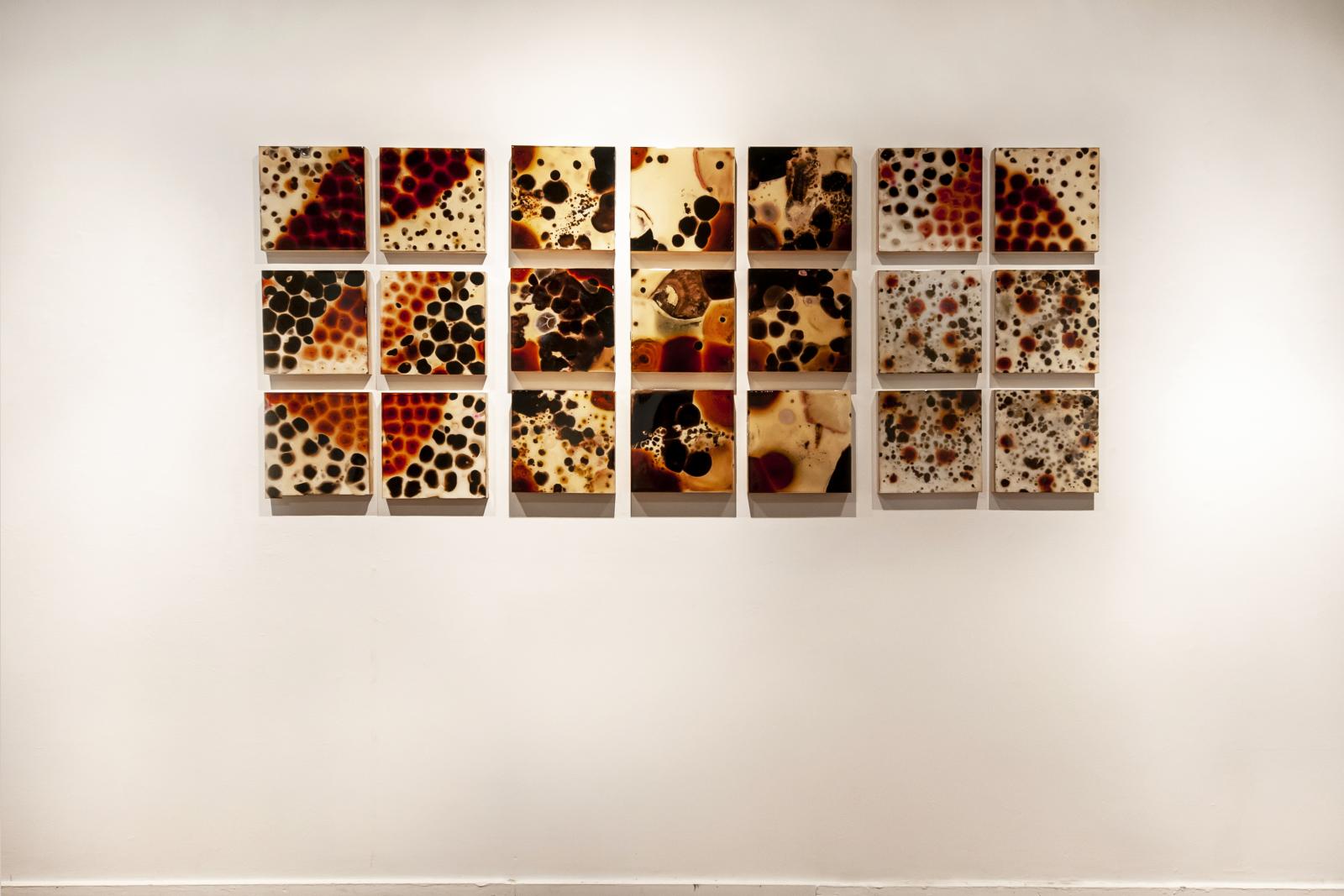
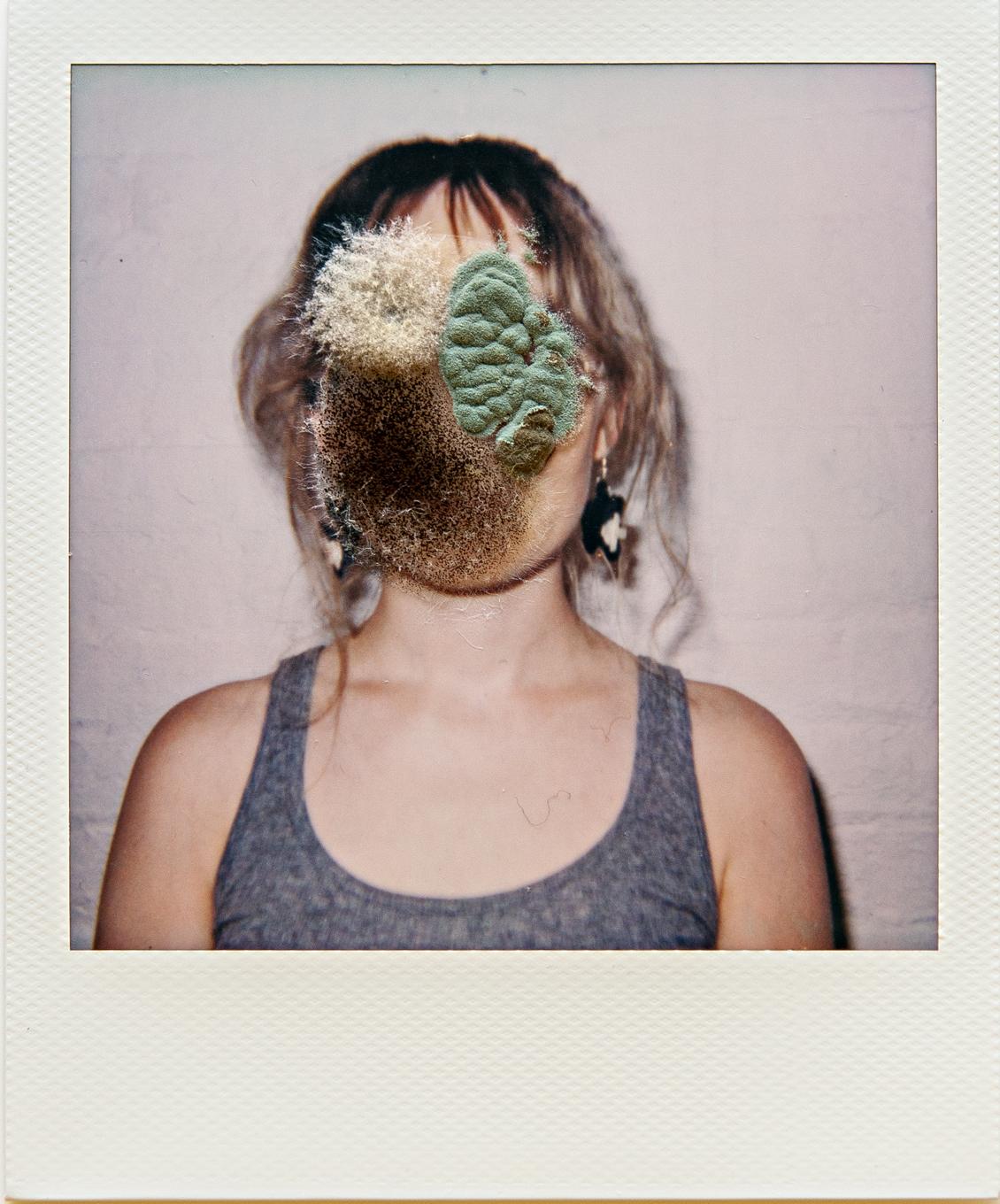
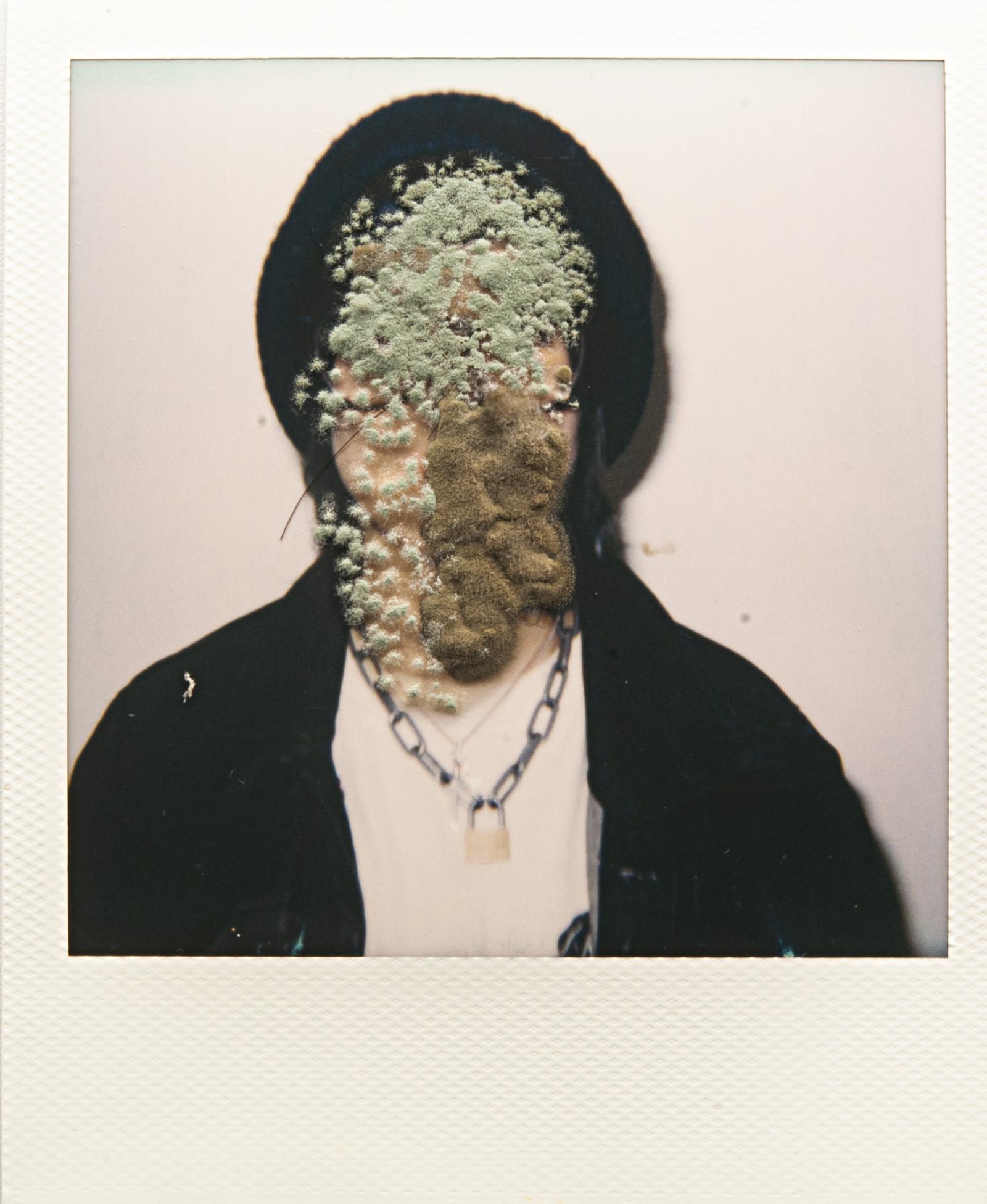
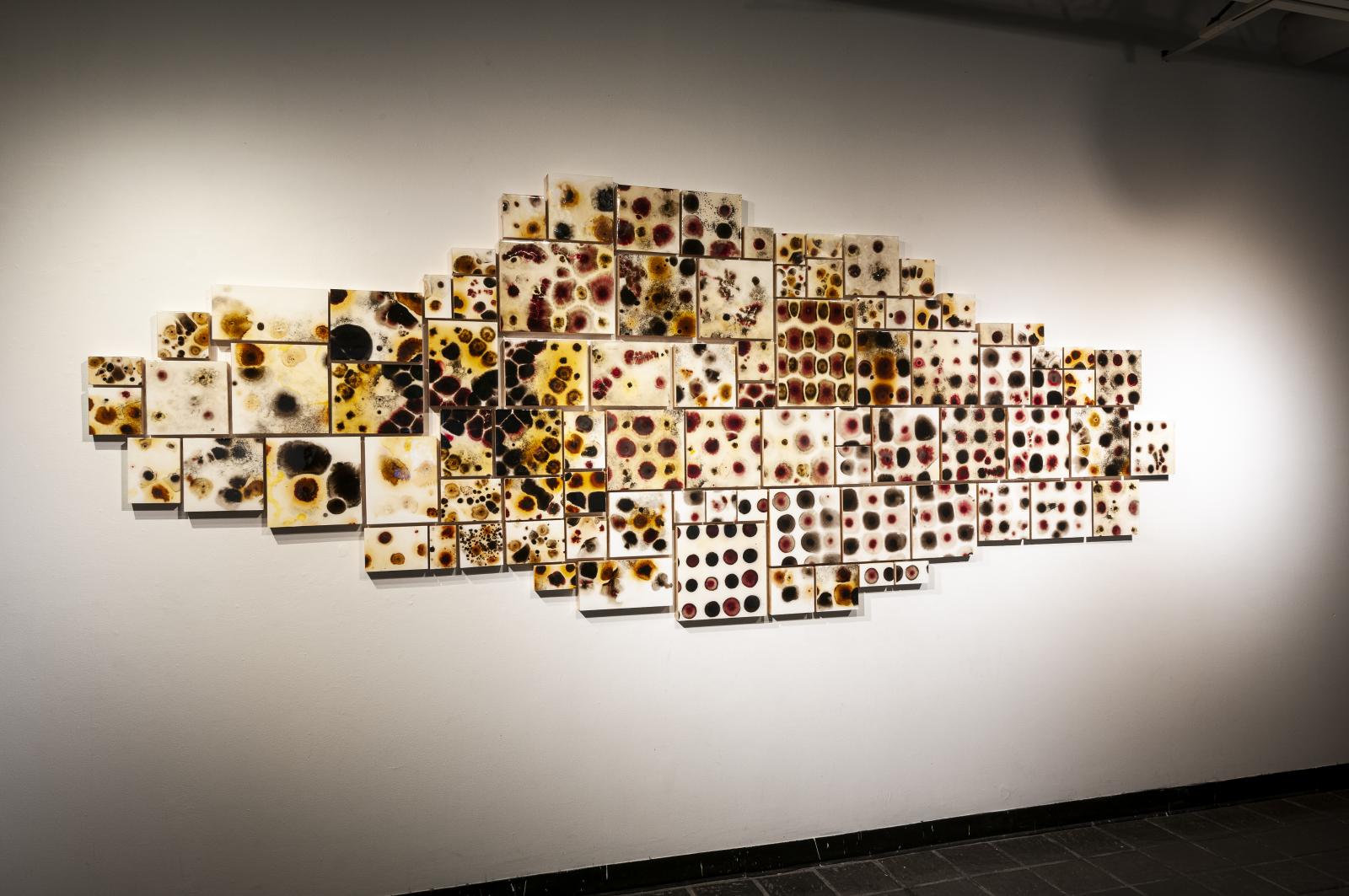
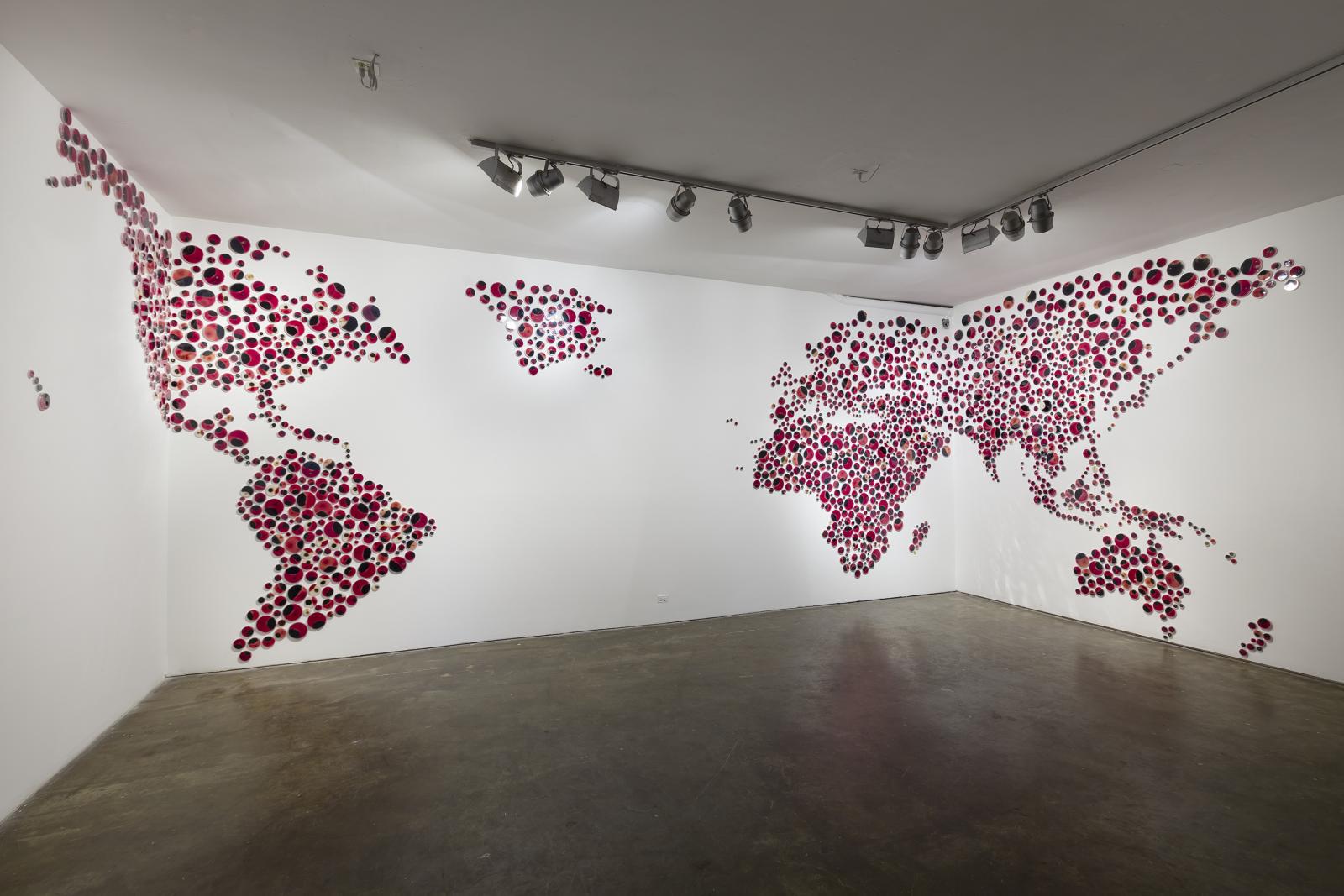
Featured Work: Photos
Contamination 'Colony '50''
Mold spores on panels covered with resin
2021
I use alive microscopic mold that leaves physical inscriptions by direct contact on the surface of a paper or board, which creates a living platform. In Contamination Series, the surface of each panel is laced with graceful, brilliant mold until the entire surface is covered and patterned with circular borders.
Contamination 'Annapolis'
Microscopic mold on panels
2018
In this work, I used microscopic mold that is collected from Highland Beach, Annapolis to create an unseen landscape of the scene. Emerging from a diverse array of mold, this work interprets the landscape with invisible inhabitants.
Fertile Faces (Becky)
Mold spores on Polaroid covered with epoxy
2022
‘Fertile Faces” combines photography and biological mediums. This project is an ongoing project since 2021. It started during my residency at Istanbul Art Residency and continued at Mass MoCA artist residency in 2022. In this interactive project, Participants contribute with their portraits and microorganisms taken from their bodies.
Mold spores are considered a destructive power. However, in this project, mold spores carry the concept of portrait into a new physical reality. I take polaroid portraits of the participants and collect mold spores from their bodies. Then, these microscopic organisms are applied to the polaroid to destroy their portraits. Each person’s unique microbiome transforms the portrait into a new reality. This process makes the microorganisms in participants' bodies visible with distinct colors, textures, and forms. The unseen inhabitants’ interactions and their natural forms create a new identity for the participants. mold spores that we recognize as harmful, reconstruct their portraits.
Fertile Faces (Jo Cosme)
Mold spores on Polaroid covered with epoxy
2022
‘Fertile Faces” combines photography and biological mediums. This project is an ongoing project since 2021. It started during my residency at Istanbul Art Residency and continued at Mass MoCA artist residency in 2022. In this interactive project, Participants contribute with their portraits and microorganisms taken from their bodies.
Mold spores are considered a destructive power. However, in this project, mold spores carry the concept of portrait into a new physical reality. I take polaroid portraits of the participants and collect mold spores from their bodies. Then, these microscopic organisms are applied to the polaroid to destroy their portraits. Each person’s unique microbiome transforms the portrait into a new reality. This process makes the microorganisms in participants' bodies visible with distinct colors, textures, and forms. The unseen inhabitants’ interactions and their natural forms create a new identity for the participants. mold spores that we recognize as harmful, reconstruct their portraits.
Contamination 'New Land'
Mold on yupo paper mounted on panels and covered with epoxy resin
2019
"Selin Balci utilizes mold spores grown in a bio lab as metaphors for the human condition in our ongoing fight for resources and territory. These abstract works on panels are a new form of art that takes months to grow in a laboratory/studio." Curators Charlotte Mouquin and Victoria Rolett
Bordered World
Evolving mold in 2500 Petri dishes
2014-15
Bordered World creates competition for resources, territorial wars, and struggle for power and control among living organisms. In this project, I reference the fundamental, underlying social dilemmas and principles of our existence in an effort to understand and highlight social issues. My concepts are explored using living entities such as fungus and mold to recreate observable interactions and conflicts across the picture surface, where the outcomes reveal boundaries, edges, and distinctive forms. In Bordered World, all vital resources are restricted. This limited environment makes microbes compete for resources, dominate a particular area or become invasive and endanger others. When they share the same living platform, a conflict for resources arises and eventually, this results in a borderline. The behaviors of the microorganisms resemble human actions and motives. Visually representing the world map, these microbes act as metaphors for war and the human predicament.
"In Selin Balci’s bio-art installation Bordered World, 2,500 Petri dishes compose a three-dimensional kaleidoscopic world map representing the universal struggle for survival and dominance. Within each hand “painted” Petri dish, live molds and fungi are in an observable battle for limited resources. Distinctive borders slowly form and new colonies develop during this microscopic feud." Smack Mellon Curator
Videos
-
Fertile Faces (Self-Portrait)
See more information about Fertile Faces (Self-Portrait)In ‘Fertile Faces’, participant interacts and contributes to the work with their unseen microorganisms. After taking their Polaroid portraits and collecting samples from their bodies and living environments, I reconstruct their images with the microorganisms they live together. Each person’s unique microbiome transforms their photographs into a new reality. While making the hosts’ microorganisms visible to our eyes with distinct colors and forms, the unseen inhabitants’ interactions and their natural form create a new identity of the artists.Medium: Mold spores on PolaroidYear: 2021-OngoingDetails: 38 seconds -
Unseen Majority
See more information about Unseen MajorityMedium: Documentation of unseen mold spores taken from AnnapolisYear: 2022Details: 41 seconds

